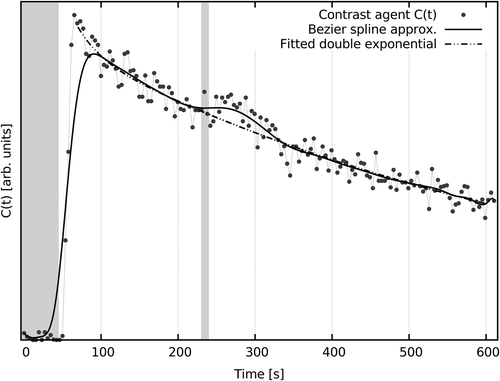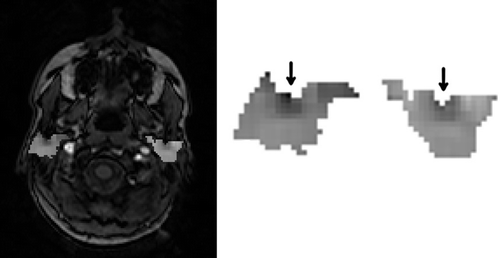Figures & data
Figure 1. A typical spatially averaged voxel C(t) demonstrating temporal stages of the protocol. From left: pre-contrast agent injection window (left-most gray box); rapid uptake period, where high concentrations of contrast rapidly perfuse into parotid tissues, peak, and begin to drain; stimulatory period running from 230 to 240 s from scan commencement, and a stimulatory response manifest as a modest contrast agent concentration increase; and continued slow washout. An empirical fit omitting the stimulatory period and Bezier spline interpolation are shown as visual guides.


